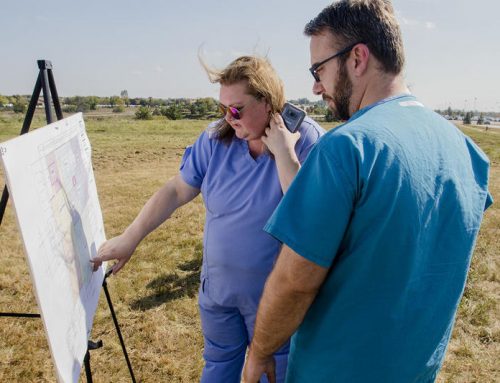It’s been an incredibly tough month for mother monster, Lady Gaga, who has very recently opened up about the battle she’s facing with a chronic pain condition known as fibromyalgia. On Friday (Sep. 15) the singer began posting a series of photos from a hospital in Rio, Brazil explaining that she was unable to continue touring due to agonizing and severe physical pain. And while Gaga’s Netflix documentary, Gaga: Five Foot Two, was supposed to look at her battle with pain, the actual reveal of her chronic illness came Monday (Sep. 18) on Instagram.
“I have always been honest about my physical and mental health struggles. Searching for years to get to the bottom of them. It is complicated and difficult to explain, and we are trying to figure it out. As I get stronger and when I feel ready, I will tell my story in more depth, and plan to take this on strongly so I can not only raise awareness, but expand research for others who suffer as I do, so I can help make a difference. I use the word “suffer” not for pity, or attention, and have been disappointed to see people online suggest that I’m being dramatic, making this up, or playing the victim to get out of touring. If you knew me, you would know this couldn’t be further from the truth. I’m a fighter. I use the word suffer not only because trauma and chronic pain have changed my life, but because they are keeping me from living a normal life. They are also keeping me from what I love the most in the world: performing for my fans. I am looking forward to touring again soon, but I have to be with my doctors right now so I can be strong and perform for you all for the next 60 years or more. I love you so much,” Lady Gaga said, announcing she needs to reschedule the European leg of her tour.
The news brings back into the spotlight a disease that has been often misunderstood by the public, one that is characterized by chronic pain and excessive fatigue with no known cause. Billboard spoke with the Mayo Clinic’s Dr. Arya Mohabbat and Connie A. Luedtke, R.N., nursing supervisor of the hospital’s Fibromyalgia Clinic, about what people should know.
What is fibromyalgia? What does it entail and what causes it?
Dr. Mohabbat: Fibromyalgia is a chronic centralized pain sensitivity syndrome. Basically what that means is people are going to have long-lasting, head to toe pain that they feel in their muscles and joints, and this pain lasts for long periods of time but is in the absence of any inflammation.
What are some of the symptoms?
AM: Beyond pain complains, many patients complain of fatigue, abdominal, bowel and bladder issues. Patients will have headache issues, and they’re going to have sleep issues. Whether they sleep a lot or a little, it’s what we call a restless sleep. They get a lot of numbness and tingling throughout their body. They get a lot of hypersensitivities. Foods can bother them. Medications can bother them. Oftentimes patients will say I get side effects of this or that medication because they are so hypersensitive to so many of the things that people who don’t have fibromyalgia take for granted.
We also see people having complaints about things like generalized weakness. We see people having a lot of what we ended up calling fibro fog, which basically means cognitive complaints. It’s not that they’re having dementia, but they’re having a lot of issues with short term memory and task related memory recall activities, like, ‘I pick up my phone but who was I going to call?’ type of thing, which can be extremely frustrating. Unfortunately with fibromyalgia, they don’t get to pick and choose which symptoms they have. It seems to be a snowball effect, getting many, if not all, of the symptoms I just mentioned. Fibromyalgia can be very devastating to an individual.
Connie Luedtke, R.N: The other thing that we see clinically that’s frustrating for patients is symptoms aren’t always consistent. So maybe they start off having pain in their hip and for several weeks it’s their hip and then it’s their shoulder. So when they got to the doctor and say I’ve had hip pain now I have shoulder pain, it’s not only confusing to the patient it’s also confusing to the provider if they’re not accustomed to dealing with people with fibromyalgia.
What causes this? Is it an autoimmune illness, like lupus, which is what Selena Gomez has, or rheumatoid arthritis?
AM: The best we understand as of right now is no. Autoimmune implies that the body is producing proteins called antibodies that go and attack certain healthy parts of their own body. As of right now we do not have evidence for that in fibromyalgia. The cause is still relatively unknown, but it’s thought to have something to do with the production of chemicals in between neurotransmitters. About 8% of the U.S population has this condition, but studies show that there is a familial pattern to it. If an individual has it and that individual has a twin, that twin has a 50% chance of getting fibromyaglia thanks to their genetic predosposition. If an individual has the condition and they have a child, that child is about 8.5 times more likely than the general population of getting this. So definitely there is a genetic influence, but as to what specific gene mutation might cause this, we’re not there yet.
CL: We know that there are precipitating factors. Clinically, we see that our patients will present to us and some will say that they were fine until they had some sort of an infection. We ask when they started having symptoms. So infection, or physical trauma like a car accident, or a surgical procedure [can precipitate symptoms.] That can be the case. There are many people that also have no recollection or understanding of anything that seemed to happen before they started getting ill.
What are some of the treatments?
AM: One is the medication side of treatment and one is what we call the non-medication side of treatment. Medications seem to be helpful for a good percentage of the patients, but again, these are the same individuals that have hypersensitivities and intolerances to medications, so for some people, they just cause too many side effects. But I think it warrants a good conversation between a patient and their provider: these medications have been approved because they help to counteract the chemical changes from a neurotransmitter level.
There is then the whole other world of the non-medication side of treatment options. We talk about the importance of self-education, because people have to know what they’re up against and how to fight this as best as possible. We then go through basically the core tenets of non-medication strategy, which is physical therapy, occupational therapy, cognitive behavioral therapy, biofeedback therapy, massage therapy, acupuncture therapy. There’s a variety of wellness activities that people can do, what we used to call mind body activities; yoga, tai chi, pilates, meditation, guided imagery. Exercise is extremely important, but the hardest thing to sell to someone who is in pain is ‘hey, we’ve got to get moving’. It’s not about making people hurt, it’s about making sure that they stay mobile, making sure that they stay flexible because the old adage of ‘you use it or you lose it’ is sadly very true.
CL: Lady Gaga is not our patient, but she does a lot of things in her lifestyle that I think are a great example for other people with fibromyalgia. She’s very physically active, she’s into mindfulness and meditation, she has a balanced life.




Leave a Reply